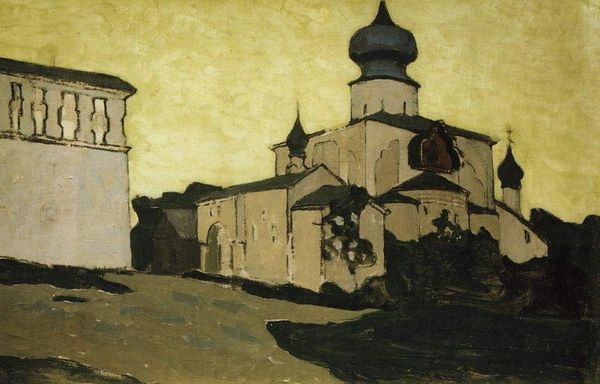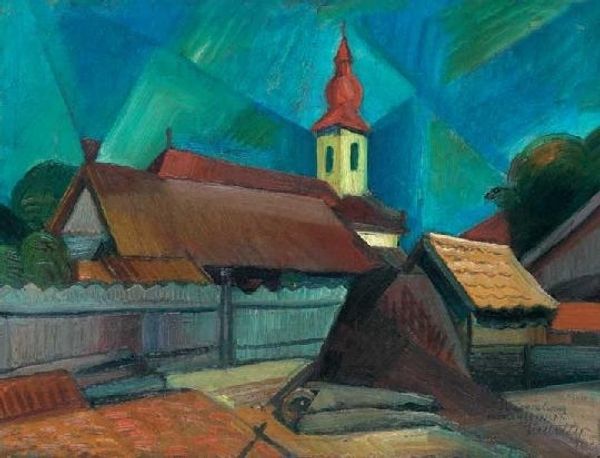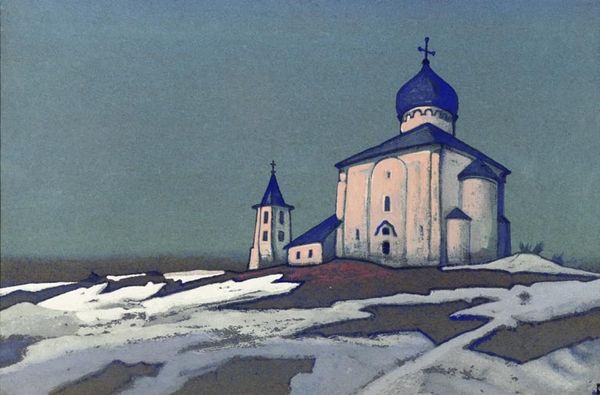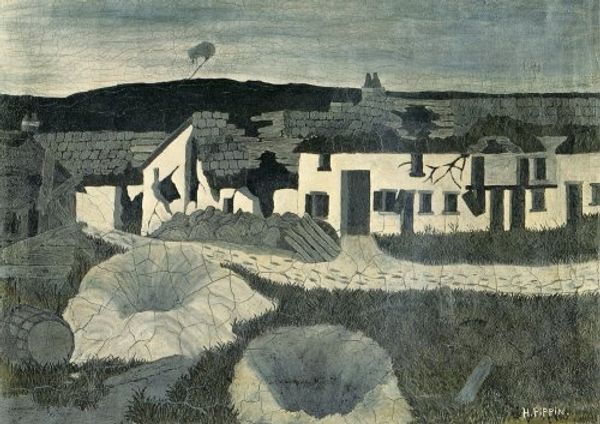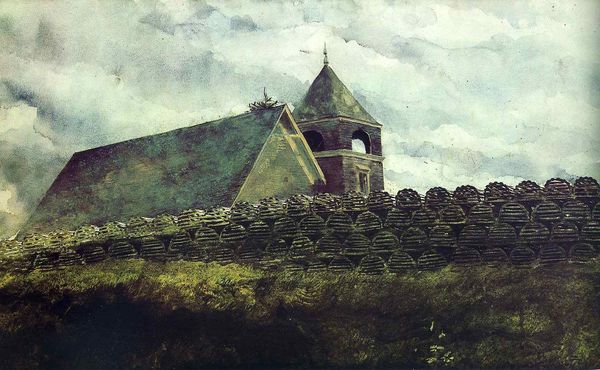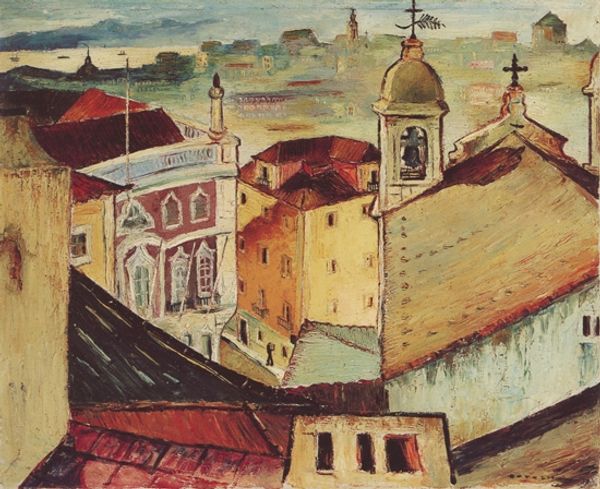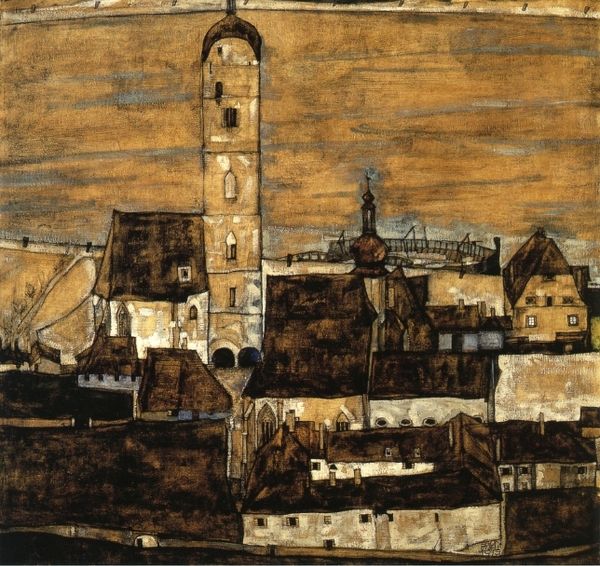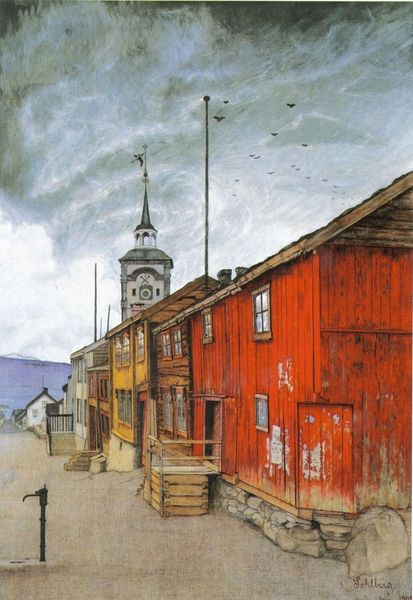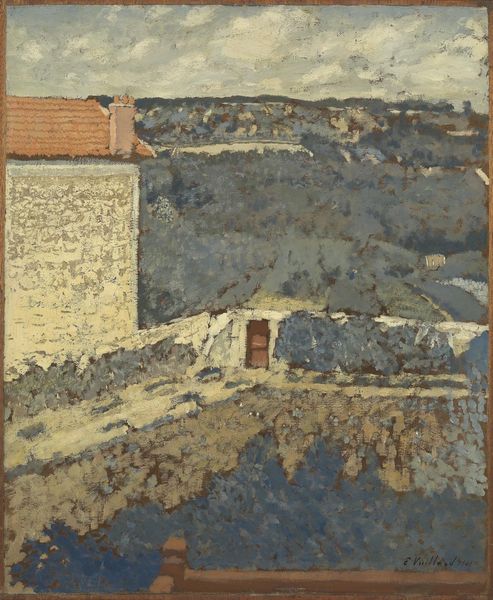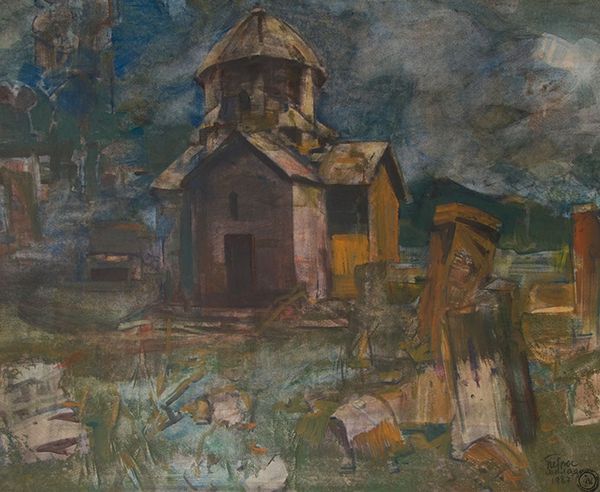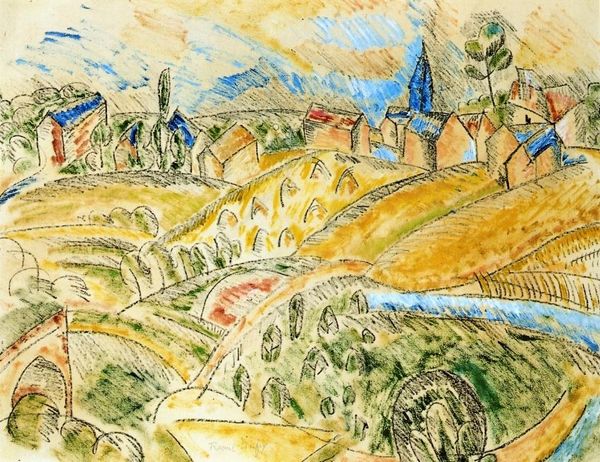
#
sky
#
abstract painting
#
graffiti art
#
painted
#
possibly oil pastel
#
acrylic on canvas
#
street graffiti
#
urban art
#
painting painterly
#
mixed medium
#
watercolor
#
building
Copyright: Public domain
Curator: Harald Sohlberg’s “Noite,” created in 1904, presents us with an intriguing vista. My initial reaction is a certain stillness. There’s a muted quality to the color palette, yet a sharp angularity in the architecture and landscape. It feels like a frozen moment in time. Editor: As a historian, what strikes me is Sohlberg’s interest in portraying both spiritual and industrial elements coexisting within a landscape, which could reflect some period anxieties and uncertainties relating to Norway's shifting identity. We should examine the symbolism further, however. Curator: Well, I notice how the architecture divides the painting right down the center, one half occupied by smokestacks while the other side of town has a graveyard filled with many headstones. Could this be an allegory of industry, or some political or economic agenda in motion? Editor: It's a strong visual contrast for sure. The eye is led directly from those foreground graves, past the stark outline of the white church, and towards that lone industrial tower—almost as if it’s the next spiritual frontier. Do you notice the slight glow, that halo effect near the chimneys? Curator: Yes, quite deliberately positioned, aren’t they? In terms of compositional strategies, the hazy coloration actually adds to the dream-like state that otherwise might be a cold depiction. Consider how those foreground tombstones bring a sense of scale to this night scene. Editor: The question then, is whether it critiques the burgeoning industrial age or acknowledges its inevitable and even spiritually transformative power, because these types of buildings and technology inevitably caused socioeconomic disruption on society at large. The church is bathed in a somber, yet strangely invigorating light. Curator: It does straddle two worlds. And looking again at how Sohlberg handles perspective and massing; his delicate balance between a romantic mood, and accurate spatial dimension. Editor: For me, I am leaving this conversation more alert to how societal contrasts get projected into our cultural imaginaries and Sohlberg shows this phenomenon. Curator: I am going to reflect on the delicate equilibrium he’s struck between stillness, movement, history, and his command of art fundamentals, to inform my next review.
Comments
No comments
Be the first to comment and join the conversation on the ultimate creative platform.

